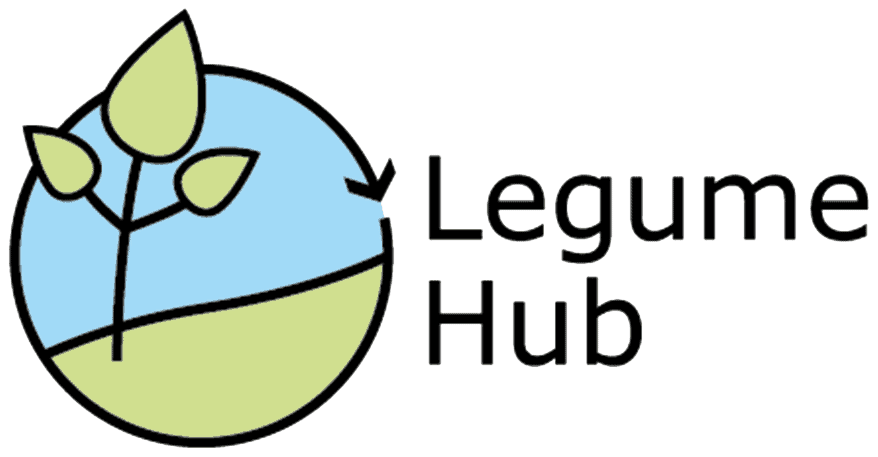Legume Futures
Legume Futures (Legume-supported cropping systems for Europe) was an international research project financed by the European Union Framework Programme 7. The aim was to develop the use of legumes in cropping systems to improve the economic and environmental performance of European agriculture.
Project duration: March 2010 to February 2014

Project consortium
This project was coordinated by Bob Rees, Scotland’s Rural College. The partners are:
- Scotlands Rural College
- University of Helsinki
- The James Hutton Institute
- Trinity College Dublin
- Leibniz-Centre for Agricultural Landscape Research
- Donal Murphy-Bokern
- Aarhus University
- Agricultural University of Athens
- Institute of Soil Science and Plant Cultivation
- Agricultural Research Centre for International Development
- Agrifood Research Finland
- The Swedish University of Agricultural Sciences
- University of Cordoba
- von Thünen Institüt
- Università Mediterranea di Reggio Calabria
- Agricultural University of Romania
- Teagasc
- Stichting Dienst Landbouwkundig Onderzoek
- The Institute of Field and Vegetable Crops
- University of Novi Sad
Project description
The Legume Futures project set out to deliver knowledge and technology for the optimisation of the use of legumes in European agricultural systems and promote the partnerships needed to achieve this. The consortium used a combination of case studies, modelling and new data to improve understanding of crop rotations and farming system for improved legume production. The consortium assessed ecosystem services delivered by legumes and the economics of legume production across the EU. Fundamental to the wider and longer term impact of the project, the project also have addressed the policy background and options.
Using an extensive network of 18 case studies in 12 countries, the Legume Futures project evaluated the current status of legumes in European farming systems and evaluated the economic, environmental and resource effects of new and novel cropping systems in which legumes are a component. The case study approach developed understanding of the current state of legume production in different agroclimatic zones and the effects of legumes in cropping systems and perceived barriers to production. This was achieved partly through discussion with an extensive network of researchers, advisors, producers and civil society. A second approach brought together insight gathered from the network of 18 long-term and well-documented experiments. The accumulated intelligence from both these approaches was used to develop biophysical and economic models of cropping systems at both the farm and regional scales. Using five contrasting regions of Europe (Eastern Scotland (UK), Calabria (IT) Sud-Muntena (RO)) Västergötland (SE) and Brandenburg (DE)), a rigorous analysis of existing and new rotational designs was undertaken to explore the economic and agronomic implications of new system designs. In the majority of cases, rotations that included legumes were more profitable than those that did not. However, in Sweden and Germany the legume based rotations were less profitable and considered by farmers to represent a higher risk than conventional non-legume based rotations. Thus at current estimates of crop values and input costs, it is already economic to include legumes in rotations in many European conditions. The legume sometimes took the form of an additional crop in the rotation and sometimes as a direct replacement for another crop. The generated rotations reflect the observations from different regions of the “pre-crop” or “break-crop” effect of legumes on yield, N uptake, quality and crop health of following crops.
Cereals following a legume crop can yield up to 25% more than continuous cereals and this research suggests that this is largely due to processes influencing nutrient uptake and pest and disease control. The magnitude of this effect varies with species, for example, high-biomass crops such as faba bean generally give a greater effect than low-biomass crops such as chickpea. Site also influences this pre-crop effect. The greatest effects of introducing legumes are seen in areas which have predominantly cereal based rotations e.g., in Poland and Northern Italy.
Policy measures available in 2014 within the Common Agricultural Policy were shown to have a limited scope for increasing cultivation of legumes in arable farming. Modelling the impact of potential European policies up until 2020 showed that a ‘Legume Premium Payment’ would offer the best opportunity to halt the decline in cultivation of grain legumes.
The case for expanding legume production in Europe is commonly based upon supposed resource use and environmental benefits (substitution of fertiliser N, reduced greenhouse gas emissions, improved biodiversity etc.). The Legume Futures project directly assessed these impacts. Biological nitrogen fixation (BNF) occurs in legumes as a result of a symbiotic relationship between the plant and microorganisms. In the literature there are a range of estimates of the importance of nitrogen fixation as an input to the European nitrogen cycle. Most published estimates have simply multiplied crop area by BNF per unit area. The project re-analysis of existing literature to additionally take into account variation in crop yields across Europe showed that 811 Gg of N (0.811 million tonnes) was fixed in the EU27 by agricultural legumes in 2009. The total amount of N fixed by forage legumes was 586 Gg, comprising 414 Gg from permanent pastures and 172 Gg from temporary pastures. For grain legumes, the total fixation of 225 Gg was dominated by pea, faba bean and soya bean, which were responsible for about three quarters of N fixed.
The losses of nitrous oxide from legume and non-legume based systems were studied in both forage and grain legumes addressing a recognised knowledge gap in this area. We measured nitrous oxide emissions across a range of sites, legumes and following crops using an agreed protocol and focussed on quantifying the proportion of nitrous oxide released from the nitrogen fixation process and the emission intensity (the amount of nitrous oxide emitted per unit of crop produced). Through this research we have established that the use of legumes (both grain and forage) within farming systems can significantly reduce nitrous oxide emissions and emission intensities. The overall average emission factor for nitrogen fixed by legumes was 0.14 % (compared to 1% for fertiliser N) resulting in an annual flux of N2O of 0.41 kg N2O-N/ha for faba bean and 0.54 kg N2O-N/ha for peas. This is approximately 40 to 50% of the default background flux of N2O used by the IPCC to account for mineralisation of crop residues and atmospheric deposition. A continental scale analysis using life cycle assessment techniques undertaken within Legume Futures compared the GHG emissions for legumes grown in Europe with those grown elsewhere. The overall impact of producing more grain legumes in Europe includes a small climate benefit compared to importing soybeans to Europe. Approximately 280 kg CO2eq are avoided for each hectare producing pea instead of wheat in Europe. Similarly, 175 kg CO2eq are avoided for each hectare of faba bean produced instead of wheat in Europe.
To quantify the impact of legumes on biodiversity, impacts on non-crop vegetation, earthworm, ground-active invertebrate and Carabidae communities, as well as soil fauna feeding activity were assessed across the network. Although there were differences between sites and crops, there was no consistent effect of the inclusion of legumes within a system on biodiversity.
Legumes have also evolved many biochemical mechanisms that protect them from herbivores, and the bioactivity of these compounds makes them suitable for many novel and non-food purposes, including the provision of novel livestock feeds, phytoremediation. A review of novel and non-food uses of legumes demonstrated their value for a range of uses as new animal feeds and non-food purposes. In the wild, biological nitrogen fixation is a characteristic of pioneering plant communities and this characteristic is provided by the legume species. Linked to this, legumes can play a special role in improving the agronomic quality of soils that are marginal to agriculture.
Acknowledgements
Legume-supported cropping systems for Europe (Legume Futures) is a collaborative research project funded from the European Union’s Seventh Programme for research, technological development and demonstration under grant number 245216.


